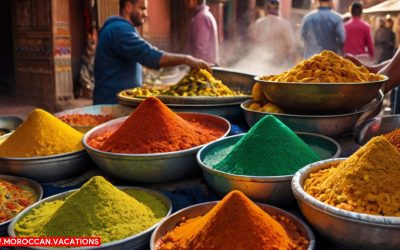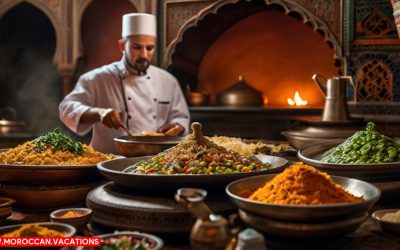Classic Moroccan Tagine Recipes
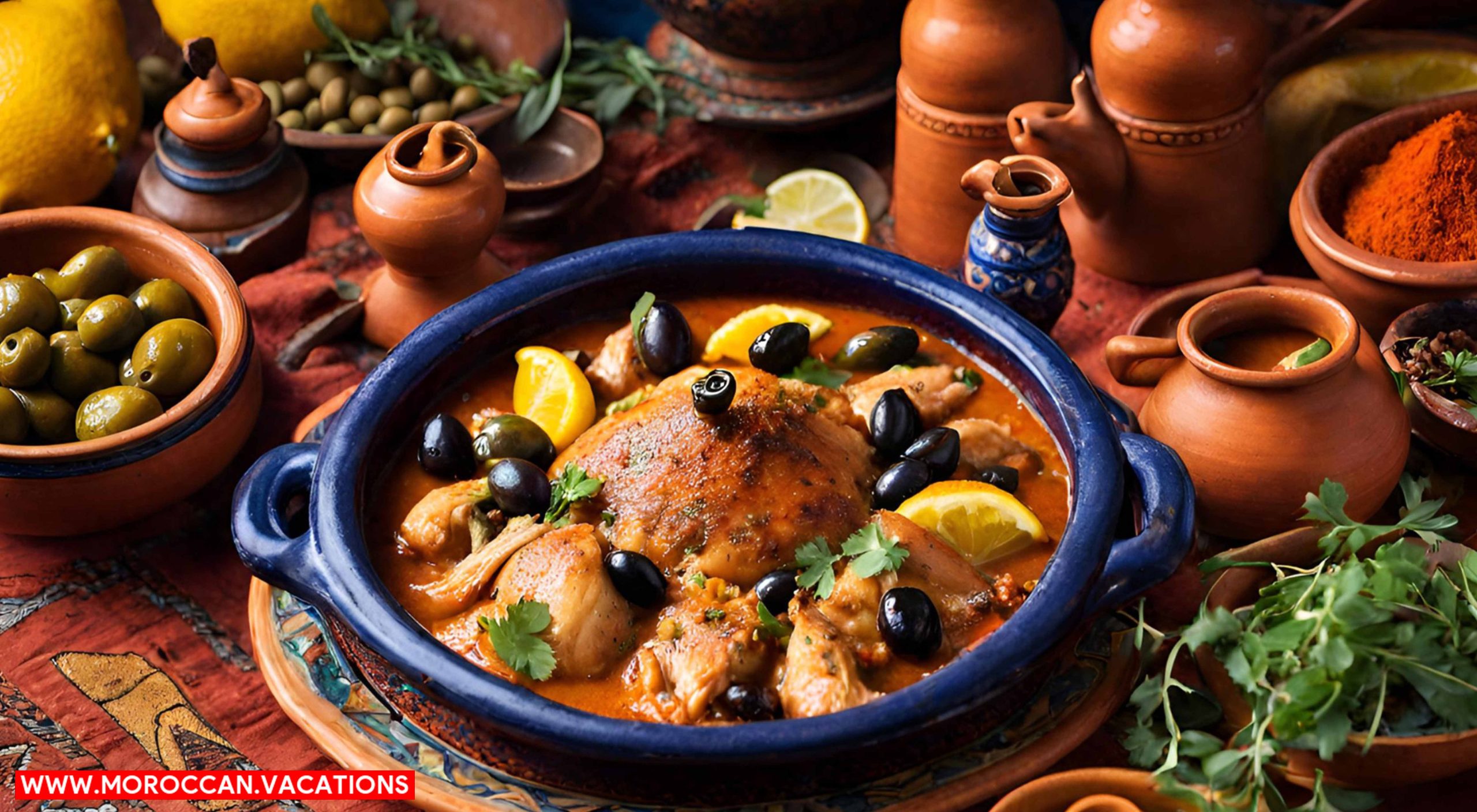

If you love Moroccan cuisine, you should definitely try making classic Moroccan tagine recipes at home. Tagine is not just a dish, it’s a cooking vessel with a cone-shaped lid that helps to lock in the flavors and moisture, resulting in tender, succulent dishes. The tagine is traditionally made from clay, which retains heat well and allows for slow-cooking. To prepare a classic tagine, start by searing your choice of meat, such as lamb or chicken, with onions and garlic in olive oil. Then, add a combination of traditional Moroccan spices like cumin, coriander, and paprika, along with a mix of popular tagine ingredients like tomatoes, preserved lemons, and olives. Next, pour in some broth and let it simmer on low heat for hours, allowing the flavors to meld together and the meat to become tender. The slow-cooking process ensures that the meat is infused with the aromatic spices, resulting in a rich and flavorful dish. Serve your tagine with couscous or crusty bread to soak up the delicious sauce. Trying out classic tagine cooking techniques will transport you to the vibrant streets of Morocco, where the air is filled with tantalizing scents and the food is bursting with flavor. So, why not unleash your inner chef and embark on a culinary adventure with classic Moroccan tagine recipes?
Flavorful Couscous Varieties
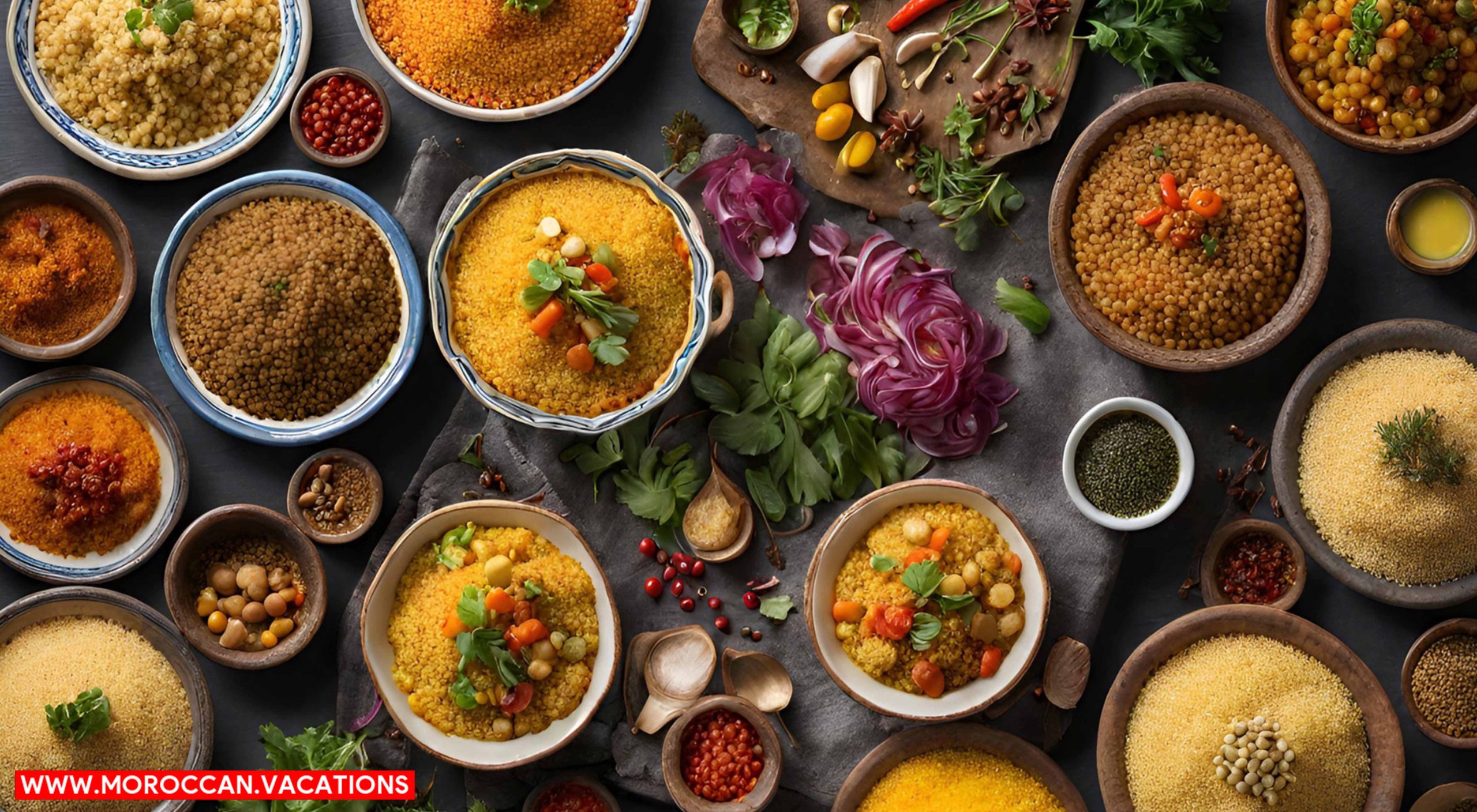

To continue exploring the diverse flavors of Moroccan cuisine, let’s delve into the wide array of flavorful couscous varieties available. Couscous, a staple in Moroccan cooking, is a versatile and delicious grain that can be prepared in various ways to suit your taste.
There are several cooking techniques for couscous, each resulting in a unique texture and flavor profile. The most common method involves steaming the couscous, which gives it a light and fluffy texture. Another technique is to cook the couscous in a flavorful broth, infusing it with the richness of the spices and herbs used in the broth. Grilling or toasting the couscous can also add a smoky and nutty flavor to the dish.
Couscous is often served as a side dish or as a base for hearty stews and tagines. It pairs well with a range of accompaniments, such as roasted vegetables, grilled meats, or tangy sauces. For a refreshing twist, try adding fresh herbs like parsley or mint, along with juicy citrus fruits and crunchy nuts, to create a vibrant and colorful couscous salad.
Irresistible Moroccan Pastries
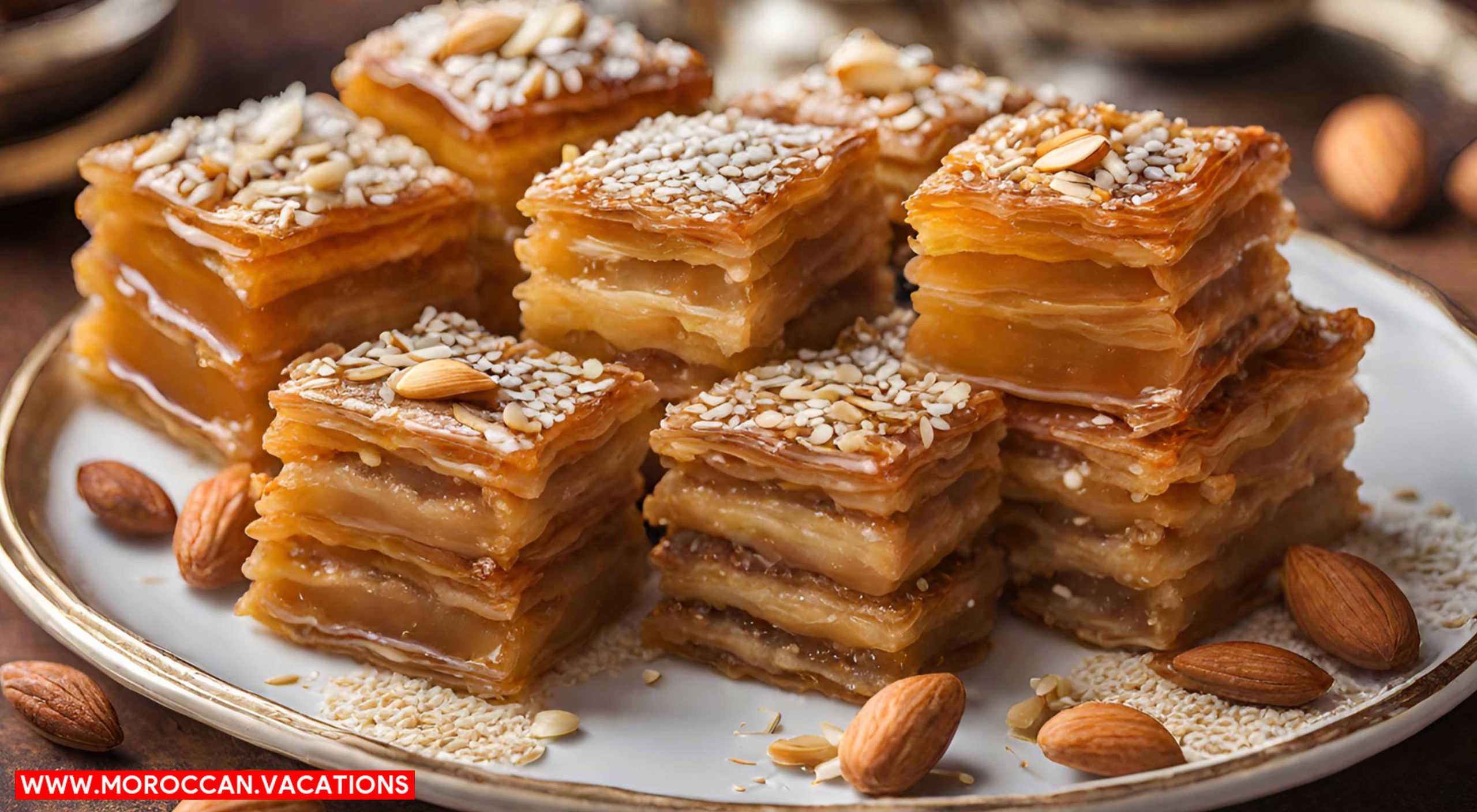

Indulge in a mouth-watering assortment of Moroccan pastries that will leave you craving for more. Moroccan pastries are a delightful combination of sweet and savory flavors, making them the perfect indulgence for any occasion. These pastries are known for their delicate and flaky texture, which is achieved through a careful process. To achieve the perfect flaky texture in Moroccan pastries, there are a few tips to keep in mind.
First, it is important to use cold butter and handle the dough with care. This helps to create layers in the pastry, resulting in a light and airy texture. Additionally, using a combination of butter and vegetable shortening can also contribute to a flakier pastry.
When it comes to fillings, Moroccan pastries offer a wide range of options. From sweet fillings like almond paste, honey, and dried fruits, to savory fillings like spiced meat and cheese, there is something to suit every taste.
To give you a better idea of the mouth-watering variety of Moroccan pastries, take a look at the table below:
| Sweet Fillings | Savory Fillings |
| Almond Paste | Spiced Meat |
| Honey | Cheese |
| Dried Fruits | Vegetables |
Whether you have a sweet tooth or prefer savory flavors, Moroccan pastries are sure to satisfy your cravings. So, go ahead and indulge in these irresistible treats that will transport you to the vibrant streets of Morocco.
Refreshing Moroccan Salads
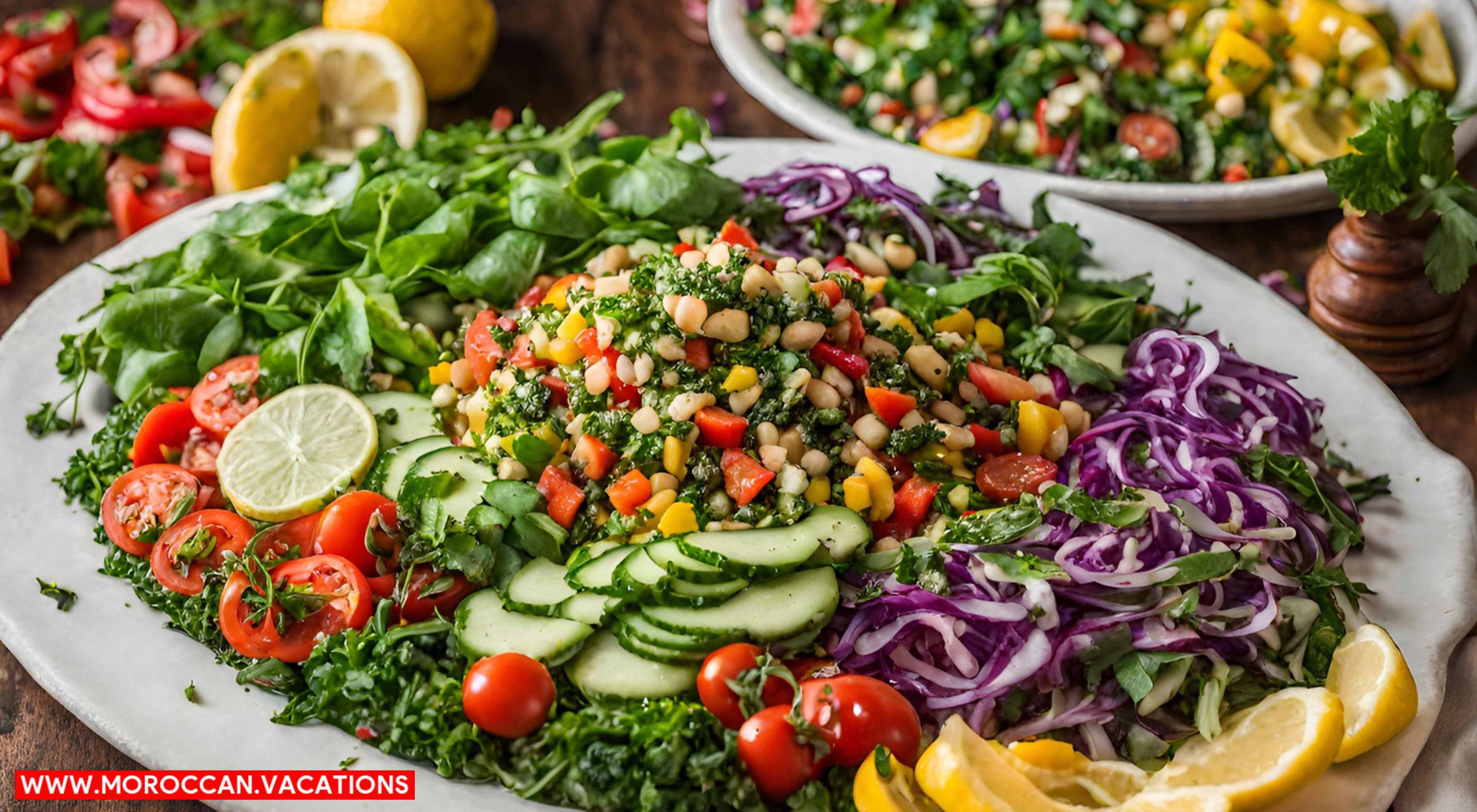

When it comes to the vibrant flavors of Moroccan cuisine, one refreshing option you won’t want to miss is the assortment of Moroccan salads. These traditional Moroccan appetizers are not only delicious but also perfect for those hot summer days when you crave something light and refreshing. Moroccan salads are known for their bold and unique flavors that come from a variety of fresh ingredients and aromatic spices. Here are two sub-lists to help you explore the world of Moroccan salads:
- Classic Moroccan Salads:
– Moroccan Carrot Salad: This salad combines the sweetness of carrots with the tanginess of lemon juice and the warmth of cumin. It’s a perfect balance of flavors that will leave you craving for more.
– Moroccan Beetroot Salad: This vibrant salad features tender beetroots tossed with earthy cumin, fresh cilantro, and a drizzle of lemon juice. It’s a feast for both the eyes and the taste buds.
- Moroccan Salad Dressings:
– Chermoula Dressing: Made with a blend of fresh herbs, garlic, lemon juice, and spices, Chermoula is a versatile dressing that complements any Moroccan salad. Its refreshing flavors will elevate the taste of your salad.
– Orange Blossom Dressing: This delicate dressing combines the floral notes of orange blossom water with tangy lemon juice and olive oil. It adds a touch of elegance to any Moroccan salad.
With these traditional Moroccan appetizers and flavorful dressings, you can bring a taste of Morocco to your own kitchen. So, don’t hesitate to try these refreshing Moroccan salads and enjoy the freedom of exploring new flavors.
Exotic Moroccan Spices and Sauces
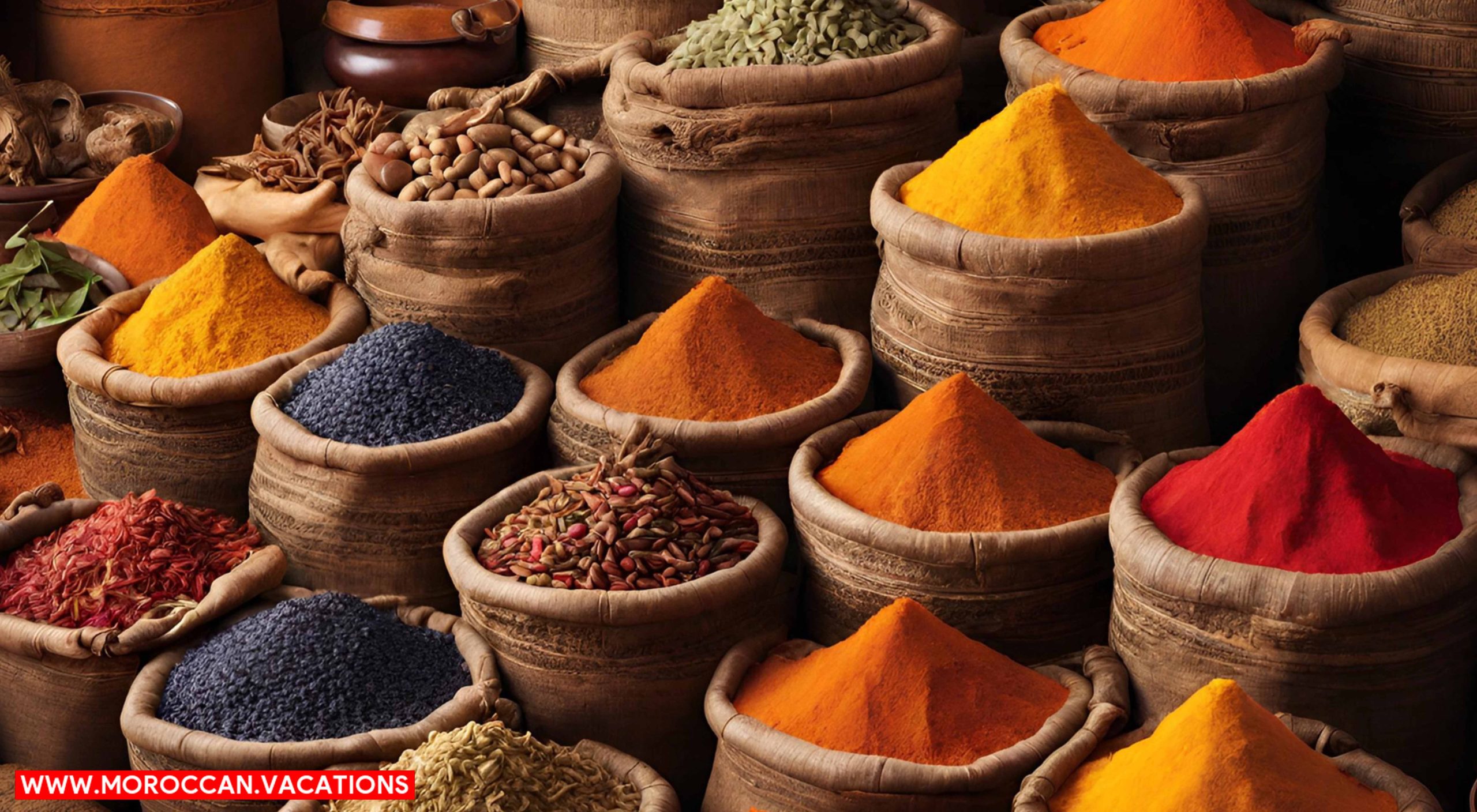

Looking to add some bold and unique flavors to your Moroccan dishes? Look no further than the exotic spice blends and unique marinades that are characteristic of Moroccan cuisine. These vibrant and aromatic ingredients will take your cooking to a whole new level.
Moroccan cuisine is known for its rich and complex flavors, which are achieved through the use of a variety of spices. Some of the most popular exotic spice blends include Ras el Hanout and Baharat. Ras el Hanout is a blend of up to 30 different spices, including cinnamon, cumin, coriander, ginger, and cardamom. Its warm and aromatic profile adds depth and complexity to dishes like tagines and couscous. Baharat, on the other hand, is a blend of spices like black pepper, cinnamon, cloves, and nutmeg. It is commonly used in marinades for grilled meats and adds a smoky and spicy kick to your dishes.
In addition to the exotic spice blends, Moroccan cuisine also incorporates unique sauces and marinades. One of the most famous is chermoula, a tangy and herbaceous sauce made with fresh herbs, garlic, lemon juice, and olive oil. It is often used as a marinade for fish or as a dipping sauce for bread. Another popular sauce is harissa, a fiery and spicy chili paste made from roasted red peppers, garlic, and various spices. Harissa adds a powerful kick to dishes like couscous and grilled meats.
Traditional Moroccan Beverages
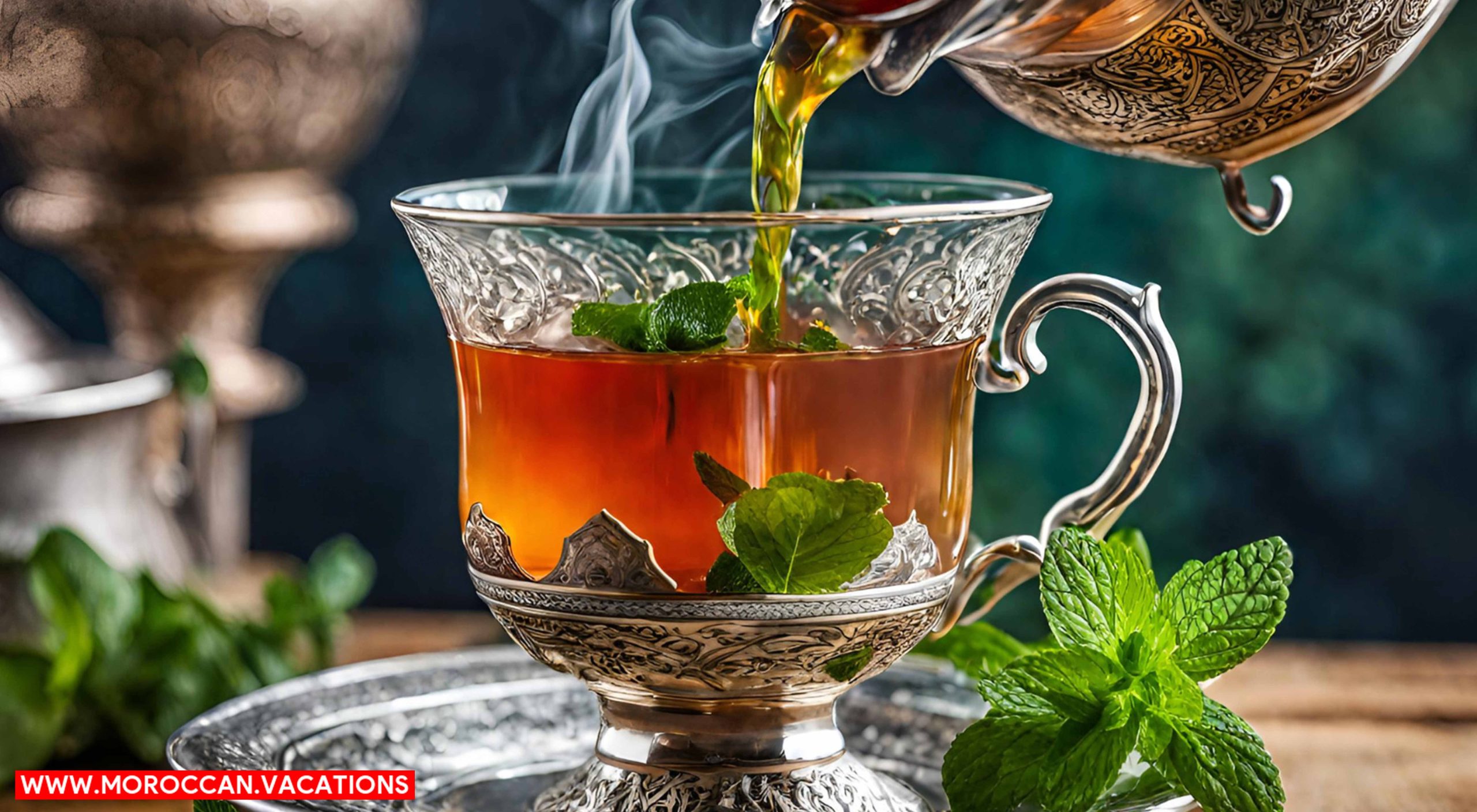

To fully immerse yourself in the flavors of Moroccan cuisine, try savoring the refreshing and traditional Moroccan beverages. These beverages are not only delicious but also offer a glimpse into the rich cultural heritage of Morocco. Here are two must-try options:
– Moroccan Tea Recipes:
– Mint Tea: This is the most famous Moroccan tea and is known for its refreshing taste. It is made by steeping green tea leaves with fresh mint leaves and sugar. The result is a fragrant and invigorating beverage that is perfect for any time of the day.
– Orange Blossom Tea: This tea combines the flavors of black tea with orange blossom water, creating a delightful and aromatic drink. It is often enjoyed with a touch of honey to enhance the sweetness.
– Non-Alcoholic Moroccan Drinks:
– Jus d’Avocat: This creamy avocado shake is a popular Moroccan beverage. It is made by blending ripe avocados with milk, sugar, and a hint of vanilla extract. The result is a rich and velvety drink that is both satisfying and nourishing.
– Sharbat: Sharbat is a refreshing fruit syrup mixed with water or soda. It comes in various flavors such as rose, lemon, and tamarind. This sweet and tangy drink is perfect for quenching your thirst on a hot day.
These traditional Moroccan beverages are a delightful addition to any meal or a refreshing treat on their own. So, go ahead and indulge in the vibrant flavors of Morocco with these tantalizing drinks. Cheers to the taste of freedom!


Samira Amrani
The passionate author behind Moroccan Vacations, sharing her expertise and love for Moroccan culture, cuisine, and travel experiences to inspire wanderlust in every reader.
Related Articles
Vegetarian and Vegan Options in Marrakesh Street Food
Traditional Moroccan Vegetarian Tagines Are you tired of feeling limited when it comes to finding vegetarian and vegan options in Marrakesh's bustling street food scene? Well, we've got some good news for you! Get ready to embark on a culinary adventure filled with...
Street Food Safety Tips for Enjoying Marrakesh's Local Cuisine
Research Local Food Regulations Did you know that Marrakesh is home to a vibrant street food scene, offering a rich variety of local cuisine? To fully enjoy these culinary delights while ensuring your health and safety, it's important to follow a few simple tips. In...
The Influence of Arab Cuisine on Moroccan Culinary Traditions
Historical Background of Arab Influence Imagine yourself transported to the vibrant streets of Morocco, where the tantalizing aroma of spices fills the air and the sizzle of food cooking on open flames entices your senses. In this culinary paradise, the influence of...

